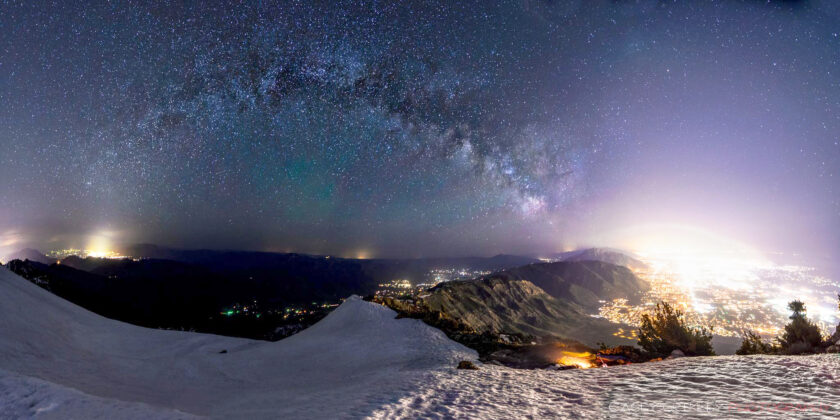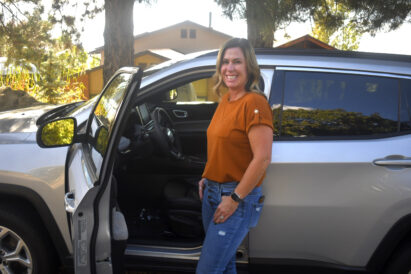Weber County Sky Monitoring Project seeks volunteers to collect brightness data

Casey Grimley/Standard-Examiner file photo
Lights from cities along the Wasatch Front and the Milky Way arch overhead as seen from the summit of Ben Lomond Mountain above North Fork Park, Utah. North Fork Park is the dark area on the lower left side of the photo.WEBER COUNTY — A community science project in Weber County is currently seeking volunteers to help collect night sky brightness data in an effort to aid animals affected by light pollution.
The Weber County Sky Monitoring Project, which the Wasatch Audubon Society sponsors in partnership with Audubon Rockies and Great Salt Lake Audubon, is gathering data to determine trends in night sky brightness as part of a larger goal to inform lighting policy and planning.
“Light pollution associated with development is rapidly increasing across Weber County. This poses a concern for migrating birds, wildlife and human health,” Leslie Loeffel explained in a document emailed to the Standard-Examiner.
Participation in the project involves the collection of light measurements at monitoring sites across the county on a seasonal basis. Volunteers are required to undergo roughly 90 minutes of training, after which monitoring sessions are two hours in length.
According to the Convention on the Conservation of Migratory Species of Wild Animals, light pollution refers to artificial light that alters the natural patterns of light and dark in ecosystems. Unlike other pollutants, light pollution disrupts the behaviors and physiology of organisms without directly entering their bodies.
Depending on their needs, animals will move closer or farther away from light or alter their behavior in other ways. As such, humans’ reliance on artificial light at night can affect both their own behavior and that of animals.
“Light pollution is known to throw off the circadian rhythms of not only humans but also animals and even plants,” Loeffel wrote. “Exposure to artificial light at night also increases the risk of depression, obesity, diabetes, heart disease and cancer in humans. Dark skies are equally important for wildlife to make their way successfully in the world. Migrating birds can become confused by artificial light and lose their sense of direction.”
Artificial light at night can also leave nocturnal species vulnerable to increased predation.
To sign up as a volunteer for the Weber County Sky Monitoring Project, fill out the Google form at https://bit.ly/46drZoG or email laurajohns0150@gmail.com with your name, email address and phone number by Aug. 10.
No prior experience is needed to participate. Volunteers work in pairs and will receive all necessary training and equipment. The next training is scheduled for Aug. 12 at 6 p.m. in Ogden. The next monitoring session will take place one night between Aug. 18 and 27.
In the meantime, Loeffel says simple steps to protect humans and wildlife from light pollution can be taken each day. They include purchasing lights that shine in a downward direction, choosing warm-colored light bulbs and keeping lights off from 10 p.m. to 6 a.m. or using motion sensors.
For more ideas, including a list of DarkSky Approved lighting products, go to DarkSky International’s website at https://darksky.org/what-we-do/darksky-approved/.



